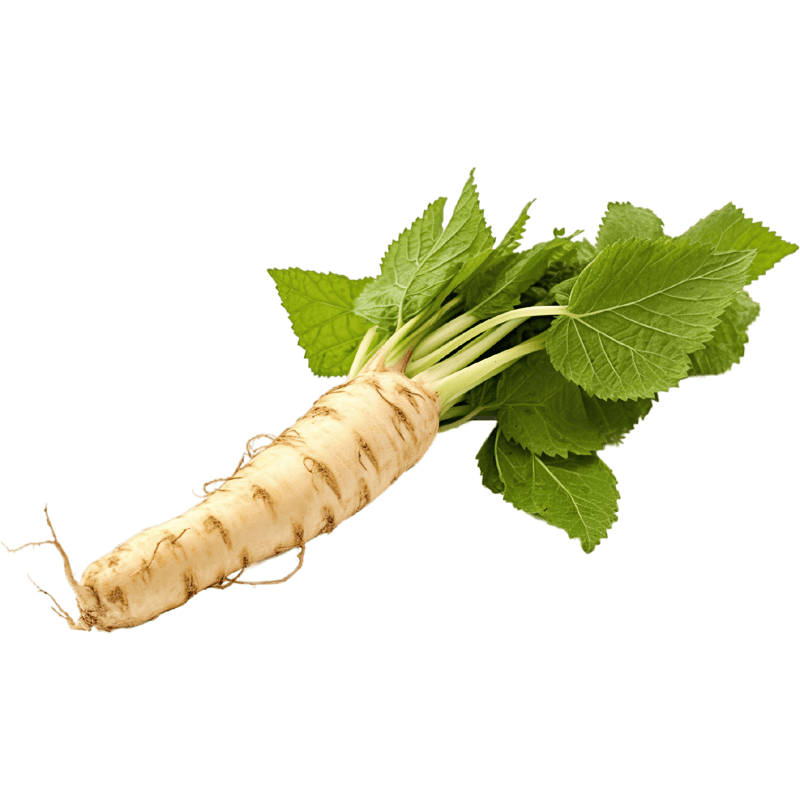Horseradish
Armoracia rusticana, sinonim Cochlearia armoracia L. – Brassicaceae

Horseradish is a perennial, herbaceous, spicy plant from the cabbage family. The medicinal part of the plant is the root, which has a characteristic hot taste. This plant contains sinigrin which decomposes into allyl-iso-sulfocyanide, glucose and potassium hydrogen sulfate. It also contains sugar, asparagine, glutamine… It is a good source of vitamins C, B1, B6, potassium, calcium and iron. It was widely used as a folk medicine, used by the Greeks and Egyptians as early as 1,500 BC.

Due to its very complex chemical composition, it is extremely medicinal, it is used to improve immunity, protects the body from colds, cleans the respiratory tract, prevents the development of microorganisms (it has shown its most antimicrobial activity in the treatment of bacterial infections of the respiratory tract and urinary bladder), improves circulation, and everything is attributed to horseradish’s high antioxidant and anti-inflammatory potential. Also, studies have proven that horseradish can be used as an aid in the treatment or prevention of diabetes mellitus type II.
References
- Phytochemical Analysis and Antidiabetic Potential of Armoracia Rusticana: Pharmacological and Computational Approach
- The antioxidant power of horseradish, Armoracia rusticana, underlies antimicrobial and antiradical effects, exerted in vitro
- A combination of Tropaeolum majus herb and Armoracia rusticana root for the treatment of acute bronchitis
- Evaluation of an Aqueous Extract from Horseradish Root ( Armoracia rusticana Radix) against Lipopolysaccharide-Induced Cellular Inflammation Reaction
